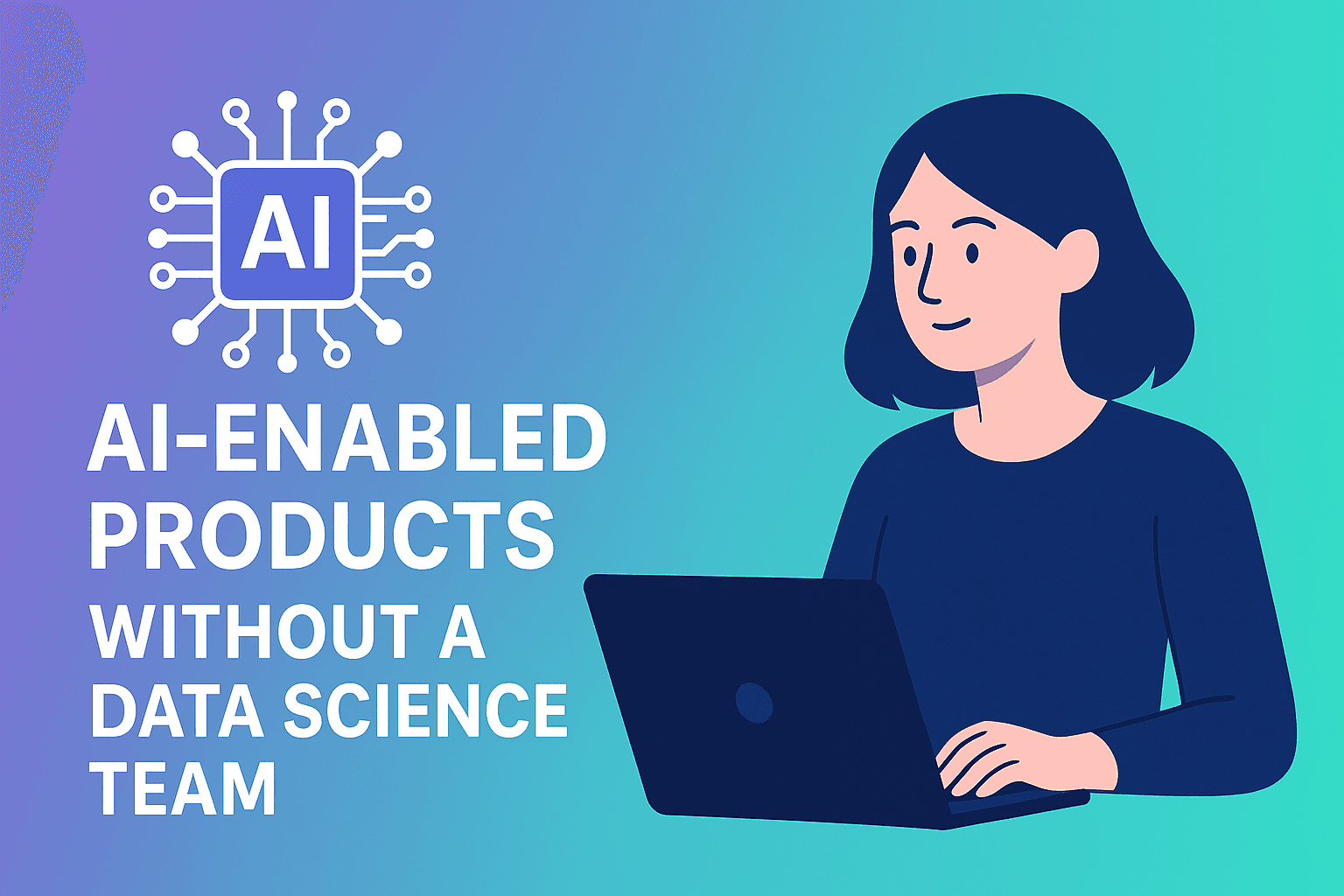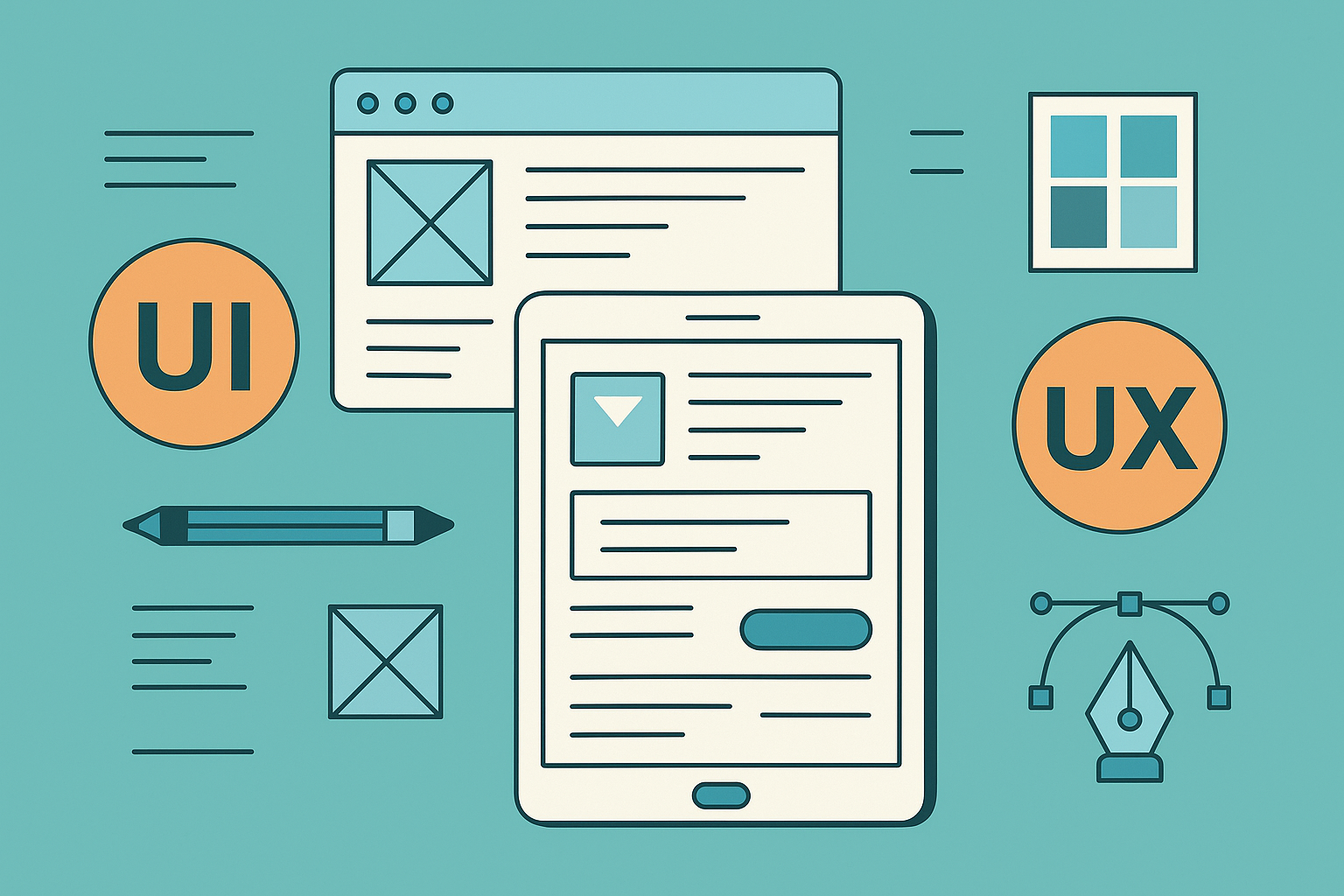Rethinking AI-Enabled Products Without a Data Science Team

Introduction
When businesses think of building AI-enabled products, the first assumption is often that a dedicated data science team is a must. While specialized expertise can accelerate innovation, the truth is that impactful AI solutions don’t always require a full in-house data science function.
By strategically leveraging existing resources, aligning efforts with user needs, and adopting agile practices, product teams can build powerful, AI-driven features without unnecessary complexity or overhead.
The Myth: AI Is Too Complex Without Data Scientists
AI carries a reputation for being intimidating — full of complex algorithms, advanced modeling, and huge datasets. While these elements are essential for some use cases, they aren’t always required to deliver value.
Today’s landscape of AI tools, platforms, and APIs has democratized innovation, making advanced capabilities accessible to teams with the right strategy and focus.
Key Traits for Success
🔍 Customer-Centric Approach
The foundation of any AI-enabled feature should be a clear understanding of user needs. Rather than chasing trends or over-engineering solutions, focus on where AI can create genuine value — automating tedious workflows, enhancing decision-making, or improving user experience.
By keeping customers at the center, you ensure every AI investment delivers measurable impact.
🤝 Cross-Disciplinary Collaboration
AI isn’t just a technical challenge; it’s a collaborative effort. Successful teams bring together domain experts, engineers, product managers, and designers to align on objectives and execution.
This collaboration bridges the gap between technical feasibility and real-world utility, ensuring that features are not just functional but meaningful.
🧘 Agile Experimentation
The fastest way to integrate AI effectively is through rapid experimentation. Instead of waiting for a “perfect” solution, start small: prototype, test, gather feedback, and iterate.
This agile approach allows teams to validate ideas early, reduce risk, and continuously improve based on real-world data and user insights.
🛠️ Leverage Tools & APIs
Building every AI capability from scratch is costly and unnecessary. Platforms like OpenAI, Google Cloud AI, AWS AI, and other API-based services make it easy to integrate advanced features into existing systems.
By leveraging these tools, product teams can deploy powerful AI functionality quickly and affordably — all without needing deep expertise in machine learning or data science.
Real Value Comes From Strategy, Not Size
The key to success isn’t the size of your team but the clarity of your objectives and the efficiency of your execution. Startups and mid-sized companies, in particular, can benefit from this lean approach, focusing their resources on building user-centric features rather than maintaining large, complex infrastructure.
Benefits of This Approach
- Lower Costs: Avoid the expense of hiring a full data science team too early.
- Faster Time-to-Market: Deploy AI-enabled features quickly with existing tools.
- Scalability: Build a foundation that can grow as your needs evolve.
- Team Empowerment: Encourage collaboration and innovation across roles.
The Real Breakthrough
The real breakthrough isn’t in the technology itself but in how you harness AI within your existing structure. By focusing on strategic execution, agile iteration, and user alignment, your product can deliver meaningful AI-driven experiences without unnecessary complexity.
This mindset transforms AI from an intimidating challenge into a practical, powerful tool for growth and innovation.
Final Thought
AI is no longer reserved for tech giants with massive research budgets. By taking a lean, focused approach, any product team can integrate intelligent features, enhance user experiences, and drive innovation.
The future of AI in product development is not about building bigger teams — it’s about building smarter strategies.


